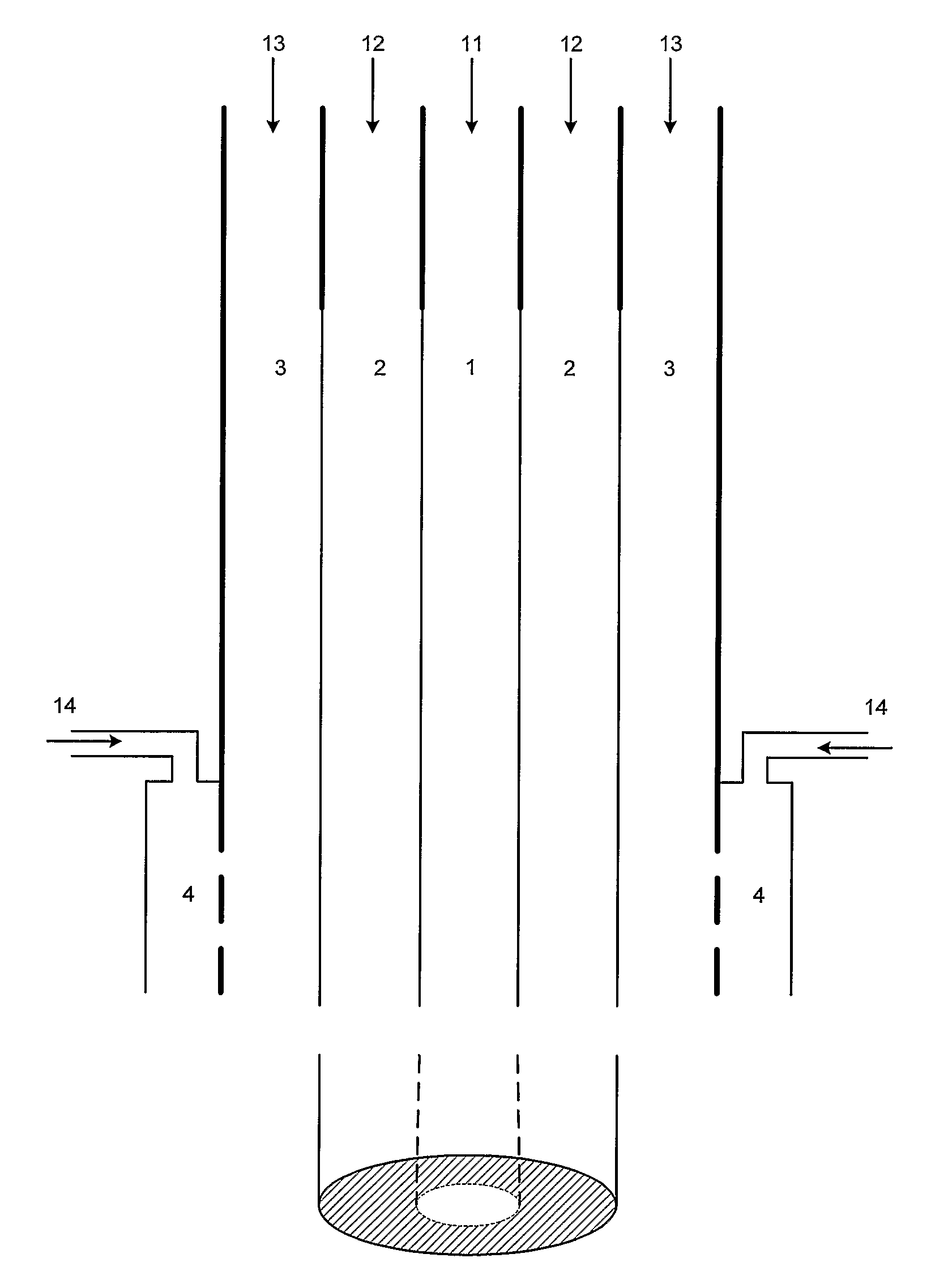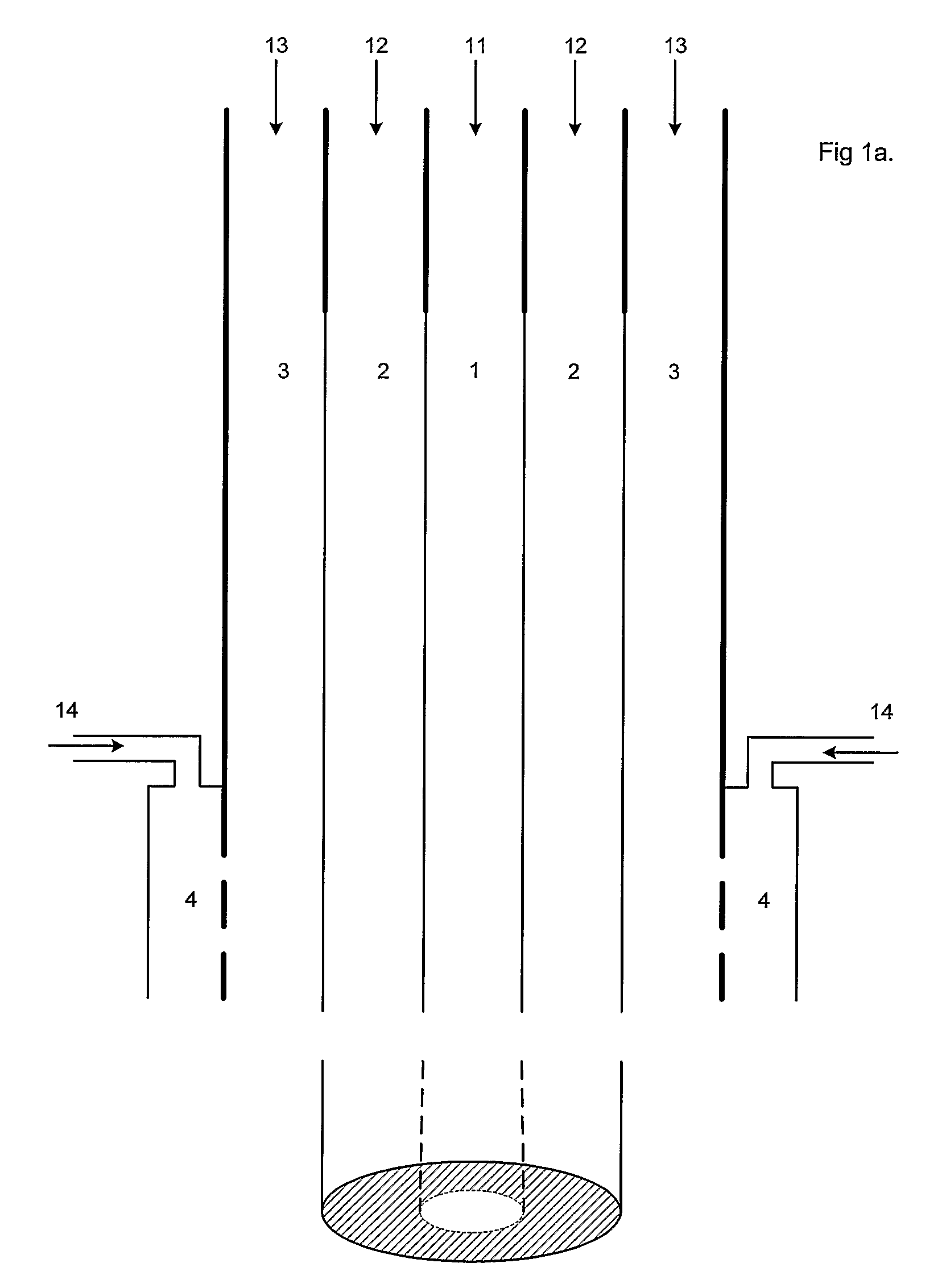Gas transfer membrane
a technology of gas transfer membrane and membrane, which is applied in the direction of electrostatic separation, chemical/physical process, solid separation, etc., can solve the problems of membrane yellowing or brittleness, the conventional materials used in membrane fabrication are unable to withstand such high levels of chemical attack, and the membrane is likely to be damaged
- Summary
- Abstract
- Description
- Claims
- Application Information
AI Technical Summary
Benefits of technology
Problems solved by technology
Method used
Image
Examples
Embodiment Construction
[0021]Accordingly, in a first aspect the invention provides a polymeric membrane formed from a resistant hydrophobic membrane, in which the pores are of a size sufficient to permit gas permeation without permitting the flow of a hydrophilic fluid across the membrane.
[0022]The invention also provides a polymeric membrane formed from a resistant hydrophobic membrane, in which the pores are of a size sufficient to permit vapour permeation without permitting the flow of a hydrophilic fluid across the membrane.
[0023]Accordingly, in a second aspect the invention provides a polymeric membrane formed from halar, in which the pores are sized sufficient to permit gas permeation without permitting the flow of liquid water molecules across the membrane.
[0024]Halar, or poly (ethylene chlorotrifluoroethylene), is a 1:1 alternating copolymer of ethylene and chlorotrifluoroethylene, which has the following structure:
—(—CH2—CH2—CFCl—CF2—)n—
While the embodiments of the invention are described herein ...
PUM
| Property | Measurement | Unit |
|---|---|---|
| wall thickness | aaaaa | aaaaa |
| porosity | aaaaa | aaaaa |
| wall thickness | aaaaa | aaaaa |
Abstract
Description
Claims
Application Information
 Login to View More
Login to View More - R&D
- Intellectual Property
- Life Sciences
- Materials
- Tech Scout
- Unparalleled Data Quality
- Higher Quality Content
- 60% Fewer Hallucinations
Browse by: Latest US Patents, China's latest patents, Technical Efficacy Thesaurus, Application Domain, Technology Topic, Popular Technical Reports.
© 2025 PatSnap. All rights reserved.Legal|Privacy policy|Modern Slavery Act Transparency Statement|Sitemap|About US| Contact US: help@patsnap.com



